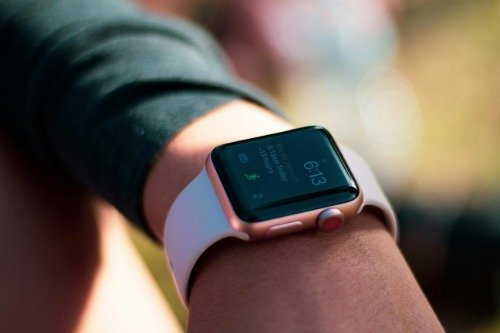In the past decade, smartwatches have evolved from simple timepieces to powerful health-tracking tools. Whether you’re using them for fitness, monitoring your sleep, or even receiving notifications on the go, these devices have become essential to daily life for many millennials. One feature, however, goes beyond just convenience: the ability to track your heart rate and other vital measurements. While most people are aware of the fitness features, many aren’t fully aware of how a specific measurement from your smartwatch could actually save your life. In this post, we’re going to break down why your smartwatch’s heart rate monitoring system is a game changer—and how it could help you spot a potential health crisis before it’s too late.
The Evolution of Smartwatches and Health Monitoring

When smartwatches first hit the market, they were mostly about convenience. You could check the time, get text notifications, and access a handful of apps right from your wrist. But over the years, these devices have morphed into something far more important. Today, almost every major smartwatch brand includes an array of health-tracking features. The most common of these is heart rate monitoring, but the latest models also track things like oxygen levels, stress, sleep quality, and even your blood pressure. These measurements are all part of a wider trend of using technology to improve personal well-being.
For example, the Apple Watch and Fitbit devices allow users to measure their resting heart rate, monitor heart rate variability, and even alert them to abnormal heart rhythms. The Apple Watch can even detect atrial fibrillation (AFib), a heart condition that can lead to strokes if left untreated. While these features are often seen as ‘nice-to-haves,’ they are incredibly important when it comes to taking charge of your health in real time. You don’t need to visit a doctor to monitor how your heart is doing on a day-to-day basis—your smartwatch is already doing that for you.
However, not all health measurements are created equal. While many metrics are helpful, one in particular stands out for its potential to save your life: heart rate variability (HRV).
What Is Heart Rate Variability and Why Does It Matter?

Heart rate variability (HRV) is a measure of the variation in time between each heartbeat. While this might sound like a minor detail, HRV is actually a crucial indicator of your overall health. A higher HRV typically means that your autonomic nervous system is in a balanced state, with a healthy response to stress and relaxation. On the other hand, a lower HRV can be a sign that your body is under stress, whether physical or emotional.
The reason HRV is such a valuable tool for monitoring your health is that it can give early warning signs of potential problems. A low HRV is linked to several health conditions, including heart disease, high blood pressure, and even diabetes. It can also indicate a higher risk of heart attacks or sudden cardiac events. In fact, studies have shown that people with lower HRV are more likely to experience serious cardiovascular issues.
What’s particularly powerful about HRV tracking via a smartwatch is that it can alert you to changes in your body before you feel symptoms. Your smartwatch can detect abnormal drops in HRV, signaling that something might be wrong long before you notice any physical discomfort. This early detection can give you a crucial window of time to seek medical advice or make lifestyle changes that could prevent a crisis down the line.
Many smartwatches now provide daily HRV reports, and some can even track trends over time. Monitoring HRV gives you a deeper insight into how your body is responding to things like stress, exercise, and sleep. If you notice a significant decline in your HRV over a period of weeks or months, it could be an early warning sign that something needs attention. With consistent tracking, you could spot these changes and take proactive steps to protect your health.
How Your Smartwatch Can Help You Prevent a Crisis

While no wearable tech can replace the advice of a medical professional, your smartwatch can certainly help you stay informed and vigilant. By tracking key health metrics like heart rate, HRV, and oxygen saturation, these devices offer insights that you might not otherwise have access to.
For example, many modern smartwatches include features that alert you if your heart rate spikes too high or drops too low, or if your HRV falls below a certain threshold. These notifications are designed to grab your attention, prompting you to seek medical advice if necessary. Even more impressively, some devices can detect irregular heart rhythms—specifically, atrial fibrillation (AFib)—and notify you in real time. AFib is a serious condition that can lead to stroke if left untreated, so getting an alert early could be a life-saving intervention.
Additionally, the integration of sleep tracking and stress monitoring features can help you identify factors that contribute to poor health in the first place. For example, poor sleep quality has been linked to higher stress levels and an increased risk of heart disease. Your smartwatch can help you recognize patterns in your sleep and stress that you may not have been aware of, providing a full picture of your health. Armed with this knowledge, you can make smarter decisions about your lifestyle, such as getting more sleep, managing stress better, or adjusting your diet or exercise routine.
The ability to track and analyze your health data is powerful, but it’s important to remember that these devices are just the starting point. Smartwatches give you a way to track your health in real time, but if any concerning trends or readings arise, it’s crucial to seek professional medical advice. These devices empower you to take charge of your health, but they work best when combined with regular check-ups and a proactive approach to well-being.
Conclusion
Smartwatches have become so much more than just a gadget to check notifications—they are personal health assistants on your wrist. From heart rate monitoring to sleep tracking, they provide a wealth of data that can help you understand how your body is performing day to day. Of all the metrics that these devices track, heart rate variability stands out as one of the most crucial for long-term health. By monitoring your HRV, your smartwatch can offer early warnings about potential health issues, giving you the chance to take preventive action.
While a smartwatch can’t replace the expertise of a healthcare professional, it can certainly help you stay informed about your body’s signals and even help prevent a health crisis before it happens. As technology continues to evolve, the potential for these devices to save lives will only grow. So, if you haven’t already, it’s time to make sure your smartwatch is tracking more than just your steps. It could be the key to living a longer, healthier life.


